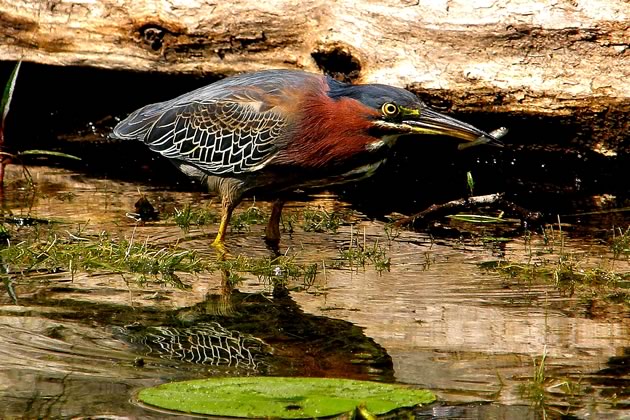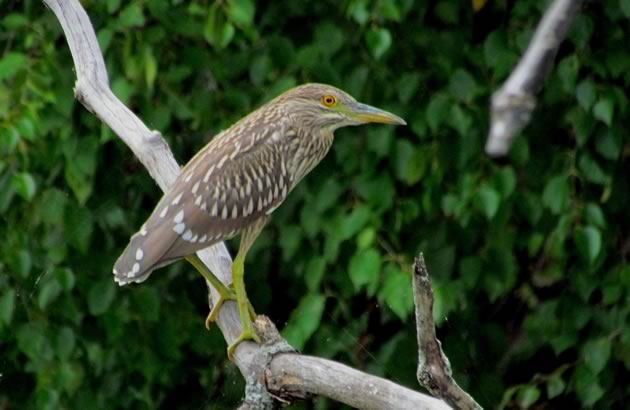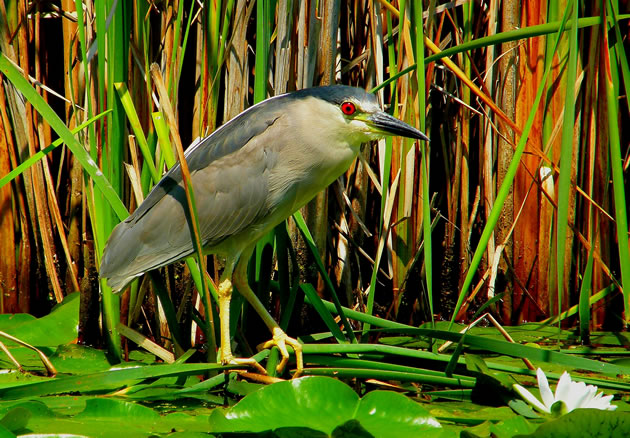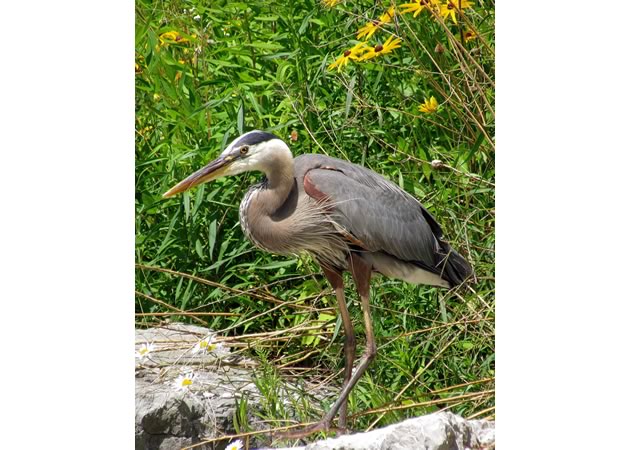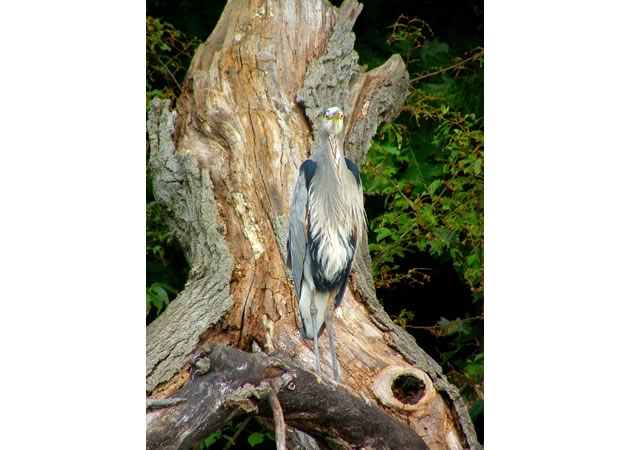Herons and Egrets
Herons, egrets and bitterns are long-legged freshwater and coastal birds in the family Ardeidae.
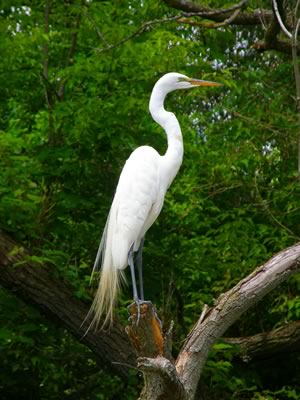
Great egret
I have a friend who grew up traipsing the hills and dells of his native Scotland. There, he tells me, he learned to “tickle” trout. He’d reach into a tumbling brook and feel for trout hiding in the shelter of an undercut bank. Upon finding one he’d grab it and toss it onto terra firma.
Maybe I’ve been had – a victim of Ian’s playful humour and his skill at spinning tall tales. But he swears his story is true.
Impressive, but equally so is how some birds catch fish using nothing but their beaks.
This amazes me. Fish move like greased lightning, their colour blends seamlessly into the mud and gravel of stream and lake beds, and they are slippery. And yet herons and egrets wield their beaks with surgical precision to catch them. If you think this unremarkable, try catching a fish with a pair of long-nosed pliers, the pliers approximating the shape and utility of a heron beak.
Pretend that your life depends on successfully landing a fish in this manner, as it certainly does for a heron. I suspect that despite the urgency of the hunt, you would go hungry.
Herons though, are so adept at using their long-nosed plier beaks to catch fish that they thrive wherever we have had the wisdom to preserve their wetland habitats.
We have four species of these fish-catching specialists in the Headwaters region. Anyone with a passing interest in nature, knows the impressive great blue heron. Crow-sized green herons are also common. Great egrets – brilliantly white – pass through on migration to and from their colonies in the Georgian Bay area, and black-crowned night herons are occasional visitors.
Catch a trout with bare hands? How about catching them with no hands at all, something herons and egrets do masterfully, every day.
Related Stories
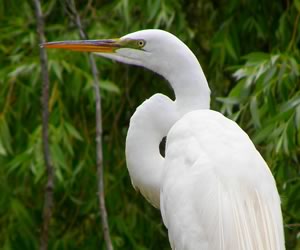
Great Egrets
Aug 15, 2014 | | BlogsEgrets were being slaughtered by the thousands in 19th century America.
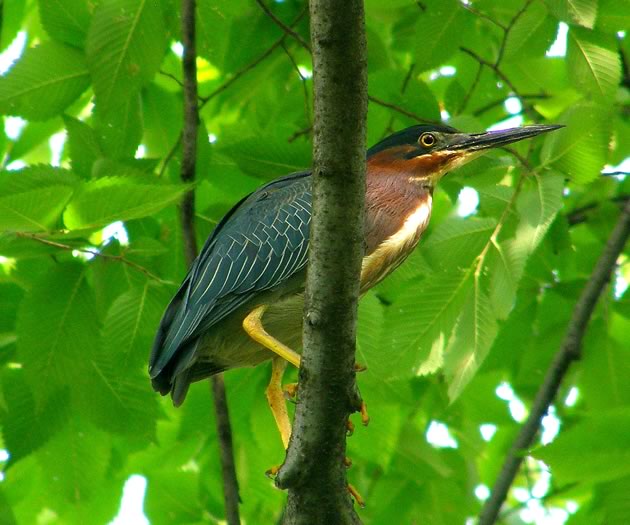
Green Herons
Apr 7, 2015 | | BlogsHumans and other animals – not so different. Green herons will sometimes use leaves and other objects to lure fish within striking distance of their rapier-like beaks.
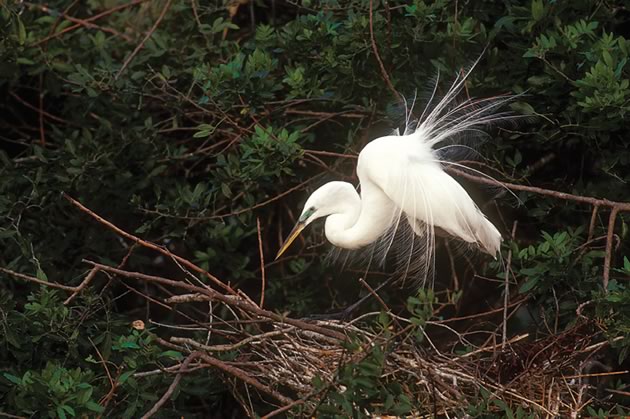
Herons and Co.
Mar 21, 2010 | | Back IssuesHerons and egrets wading in local wetlands or silhouetted against blue skies, excite people whenever they are seen. They speak to us of grace, elegance and regal bearing. We would do well to listen to what they have to say.
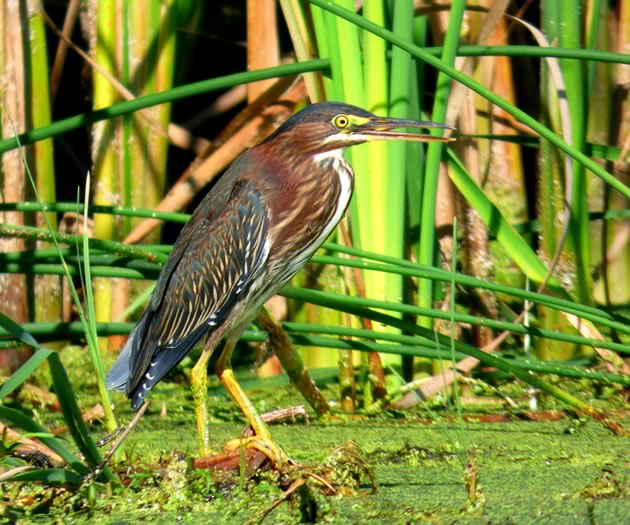
Herons and Egrets
Sep 27, 2016 | | Notes from the WildHerons, egrets and bitterns are long-legged freshwater and coastal birds in the family Ardeidae.

